Exploring the Impact of Urban Road Network Characteristics on City Fringe Tourist Areas: A Case Study of Xi’an, China
Abstract
:1. Introduction
2. Study Area Description
2.1. Overview of the Study Area
2.2. Analysis of City Fringe Tourist Area Characteristics
3. Methods
3.1. Space Syntax Model
3.1.1. Model Comparison and Selection
3.1.2. Model Building Principles
3.2. The Indices of Space Syntax
3.2.1. Depth
3.2.2. Integration
3.2.3. Choice
4. Results Analysis
4.1. Depth Value Analysis
4.2. Integration Value Analysis
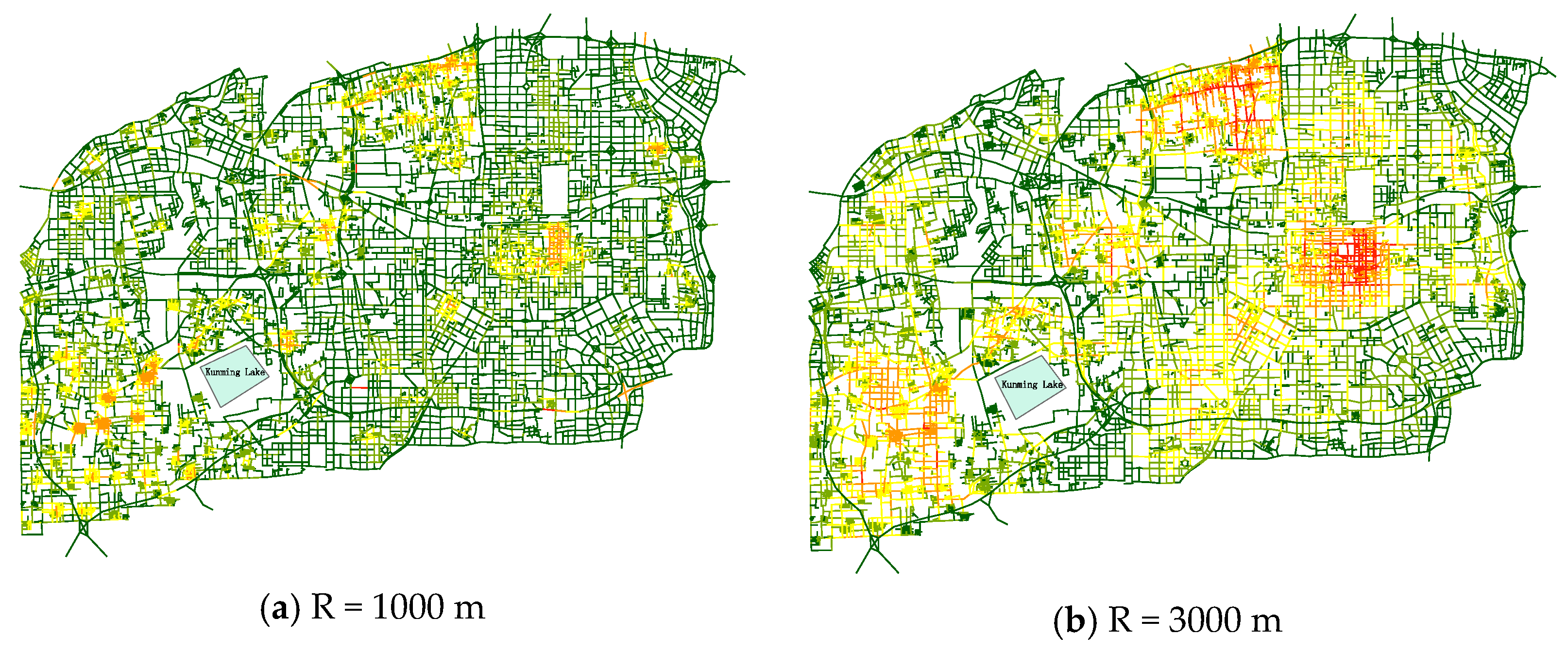
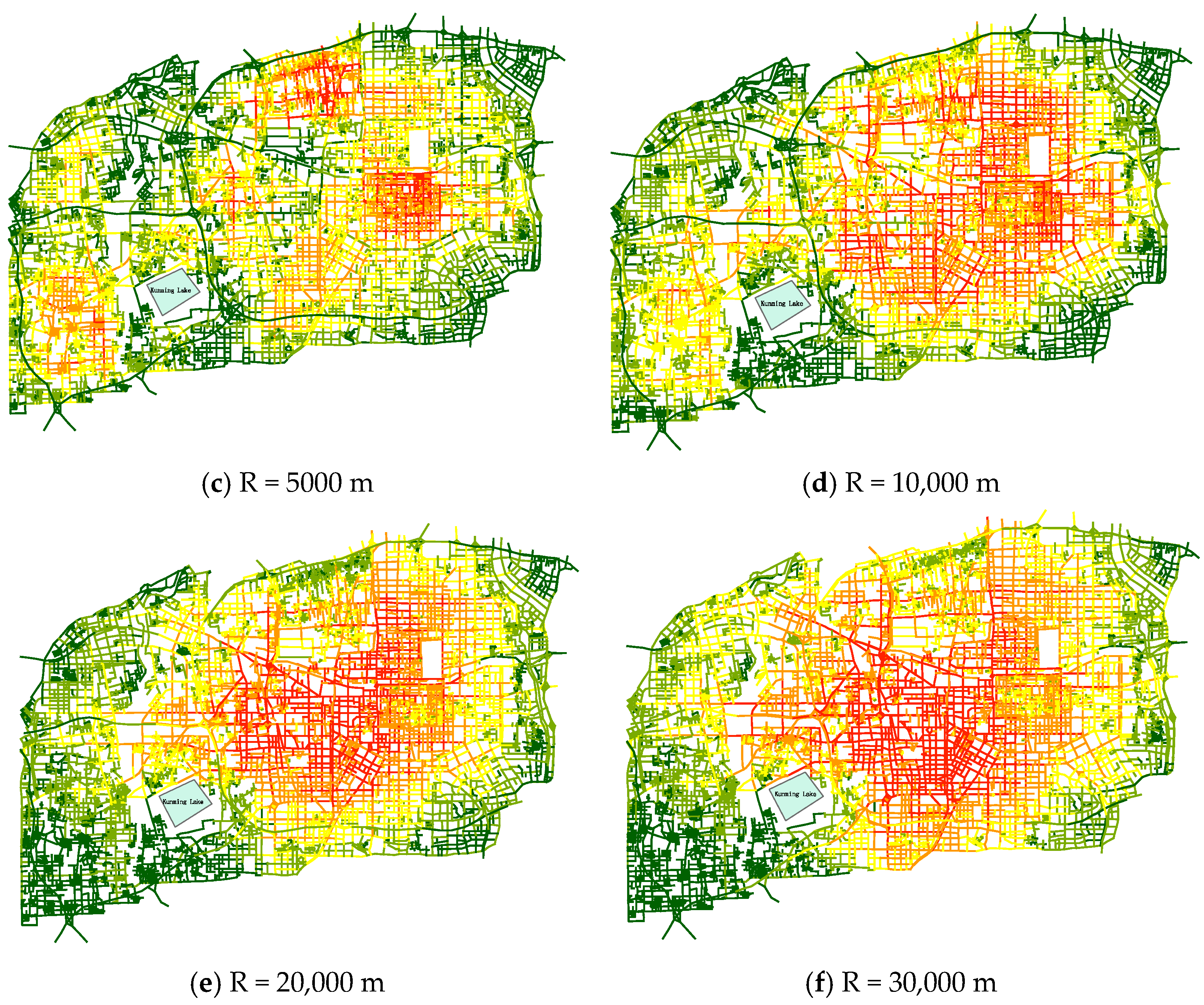
4.3. Choice Value Analysis
5. Discussion
Author Contributions
Funding
Institutional Review Board Statement
Informed Consent Statement
Data Availability Statement
Acknowledgments
Conflicts of Interest
References
- WTCF. Report on World Tourism Economy Trends; WTCF: Beijing, China, 2019. [Google Scholar]
- WTCF. Report on World Tourism Economy Trends; WTCF: Beijing, China, 2022. [Google Scholar]
- World Tourism Organization and United Nations Development Programme. Tourism and the Sustainable Development Goals—Journey to 2030; UNWTO: Madrid, Spain, 2017.
- Antara, M.; Sumarniasih, M.S. Role of tourism in economy of Bali and Indonesia. J. Tour. Hosp. Manag. 2017, 5, 34–44. [Google Scholar] [CrossRef]
- Karakas, B. Marketing business tourism in suburban areas. Int. J. Hosp. Tour. 2012, 1, 6–18. [Google Scholar]
- Bihu, W. Analysis on the Features and Causes of Seasonality in Rural Tourism: A Case Study of Beijing Suburbs. Prog. Geogr. 2012, 31, 817–824. [Google Scholar]
- Bielska, A.; Borkowski, A.S.; Czarnecka, D.M.; Malina, J.K.; Piotrkowska, M. Evaluating the potential of suburban and rural areas for tourism and recreation, including individual short-term tourism under pandemic conditions. Sci. Rep. 2022, 12, 20369. [Google Scholar] [CrossRef] [PubMed]
- Du, J.; Zhang, Y. The “City-Suburb” Tourist Flow Network Structure Characteristics in the Guangdong-Hong Kong-Macao Greater Bay Area in the Post-Pandemic Era: Analysis Based on the Network Digital Footprint. Trop. Geogr. 2022, 11, 1931–1942. [Google Scholar]
- Zhang, Y.; Chen, Z.; Sun, H.; Zhang, S.; Liu, H. Study on the Utilization of Vacant Houses in Rural Exurbs under the Background of Rural Revitalization Strategy by Taking Shenjia Village in Hunan Province as an Example; IOP Conference Series: Earth and Environmental Science; IOP Publishing: Bristol, UK, 2019; Volume 371, No. 2. [Google Scholar]
- Weaver, D. The distinctive dynamics of exurban tourism. Int. J. Tour. Res. 2005, 7, 23–33. [Google Scholar] [CrossRef]
- Afonso, W. The equity of local sales tax distributions in urban, suburban, rural, and tourism rich counties in North Carolina. Public Financ. Rev. 2016, 44, 691–721. [Google Scholar] [CrossRef]
- Gon, M. Discussing Rural-Urban Tourism: A Review of the Literature; CABI: Wallingford, UK, 2017; pp. 3–19. [Google Scholar]
- Ionescu, I.; Crenicean, L. Present and Perspectives in Tourist Evolution of the Urban, Suburban and Metropolitan Areas; Petroleum-Gas University of Ploiesti Bulletin, Economic Sciences Series 61.3; Petroleum-Gas University of Ploiesti: Ploiești, Romania, 2009. [Google Scholar]
- Alkamali, N.; Alhadhrami, N.; Alalouch, C. Muscat City expansion and Accessibility to the historical core: Space syntax analysis. Energy Procedia 2017, 115, 480–486. [Google Scholar] [CrossRef]
- Wu, J.; Li, R.; Ding, R.; Li, T.; Sun, H. City expansion model based on population diffusion and road growth. Appl. Math. Model. 2017, 43, 1–14. [Google Scholar] [CrossRef]
- Denstadli, J.M.; Jacobsen, J.K.S. The long and winding roads: Perceived quality of scenic tourism routes. Tour. Manag. 2011, 32, 780–789. [Google Scholar] [CrossRef]
- Wu, B.; Cai, L.A. Spatial modeling: Suburban leisure in Shanghai. Ann. Tour. Res. 2006, 33, 179–198. [Google Scholar] [CrossRef]
- Bauman, Z. Globalization: The Human Consequences; Columbia University Press: New York, NY, USA, 1998. [Google Scholar]
- McManus, R.; Ethington, P.J. Suburbs in transition: New approaches to suburban history. Urban Hist. 2007, 34, 317–337. [Google Scholar] [CrossRef]
- Zou, T.; Huang, S.; Ding, P. Toward a community-driven development model of rural tourism: The Chinese Experience. Int. J. Tour. Res. 2014, 16, 261–271. [Google Scholar] [CrossRef]
- Liu, R.; Wong, T.-C. Rural tourism in globalizing Beijing: Reproduction of the mountainous suburbs into a new space of leisure consumption. Sustainability 2019, 11, 1719. [Google Scholar] [CrossRef]
- Mindell, J.S.; Anciaes, P.R.; Dhanani, A.; Stockton, J.; Jones, P.; Haklay, M.; Groce, N.; Scholes, S.; Vaughan, L. Using triangulation to assess a suite of tools to measure community severance. J. Transp. Geogr. 2017, 60, 119–129. [Google Scholar] [CrossRef]
- Salvati, L.; Morelli, V.G.; Rontos, K.; Sabbi, A. Latent exurban development: City expansion along the rural-to-urban gradient in growing and declining regions of southern Europe. Urban Geogr. 2013, 34, 376–394. [Google Scholar] [CrossRef]
- Xiao, G.; Chen, L.; Chen, X.; Jiang, C.; Ni, A.; Zhang, C.; Zong, F. A hybrid visualization model for knowledge mapping: Scientometrics, SAOM, and SAO. IEEE Trans. Intell. Transp. Syst. 2023, 25, 2208–2221. [Google Scholar] [CrossRef]
- Cheng, Y.; Zhu, K.; Zhou, Q.; El Archi, Y.; Kabil, M.; Remenyik, B.; Dávid, L.D. Tourism ecological efficiency and sustainable development in the Hanjiang River Basin: A super-efficiency slacks-based measure model study. Sustainability 2023, 15, 6159. [Google Scholar] [CrossRef]
- Van der Spek, S.C. Activity patterns in public space; a tool for assessing city centres. In Proceedings of the Walk 21, 11th Conference, The Hague, The Netherlands, 16–19 November 2010. [Google Scholar]
- Jiang, B. Ranking spaces for predicting human movement in an urban environment. Int. J. Geogr. Inf. Sci. 2009, 23, 823–837. [Google Scholar] [CrossRef]
- Lerman, Y.; Rofè, Y.; Omer, I. Using space syntax to model pedestrian movement in urban transportation planning. Geogr. Anal. 2014, 46, 392–410. [Google Scholar] [CrossRef]
- van Nes, A. Spatial configurations and walkability potentials. Measuring urban compactness with space syntax. Sustainability 2021, 13, 5785. [Google Scholar] [CrossRef]
- Hillier, B.; Hanson, J. The Social Logic of Space; Cambridge University Press: Cambridge, UK, 1989. [Google Scholar]
- Patterson, J.L. Traffic modelling in cities–Validation of space syntax at an urban scale. Indoor Built Environ. 2016, 25, 1163–1178. [Google Scholar] [CrossRef]
- Perera, M.K.S.; Coorey, S.B.A. Spatial Configuration and Neighbourhood Characteristics’ Impact on Activities in Informal Spaces: A Case Study of Badulupitiya Informal Settlements in Badulla; University of Moratuwa Sri Lanka: Moratuwa, Sri Lanka, 2022. [Google Scholar]
- Zheng, J.; Bai, X.; Wu, Z.; Zhang, S.; Zhang, T.; Wang, H. Research on the spatial behavior conflict in suburban village communities based on GPS tracking and cognitive mapping. J. Asian Archit. Build. Eng. 2022, 21, 2605–2620. [Google Scholar] [CrossRef]
- Khaled, S.H.; Elsamahy, E.M.; Felix, M. Developing an agent-based model of pedestrian wayfinding to conduct the best touristic path in historic districts. Archit. Plan. J. 2022, 28, 5. [Google Scholar] [CrossRef]
- Jamhawi, M.M.; Zidan, R.A.J.; Sherzad, M.F. Tourist Movement Patterns and the Effects of Spatial Configuration in a Cultural Heritage and Urban Destination: The Case of Madaba, Jordan. Sustainability 2023, 15, 1710. [Google Scholar] [CrossRef]
- Suvannadabha, P.; Busayarat, C.; Supnithi, T. The Analytical Tools for Tourism Development through Social Media Data and Spatial Morphological Analysis. Nakhara J. Environ. Des. Plan. 2022, 21, 223. [Google Scholar] [CrossRef]
- Qin, X.; Du, X.; Wang, Y.; Liu, L. Spatial Evolution Analysis and Spatial Optimization Strategy of Rural Tourism Based on Space syntax Model—A Case Study of Matao Village in Shandong Province, China. Land 2023, 12, 317. [Google Scholar] [CrossRef]
- Can Traunmüller, I.; Keller, I.I.; Şenol, F. Application of space syntax in neighbourhood park research: An investigation of multiple socio-spatial attributes of park use. Local Environ. 2023, 28, 529–546. [Google Scholar] [CrossRef]
- Sofield, T.H.; Li, F.M.S. Tourism development and cultural policies in China. Ann. Tour. Res. 1998, 25, 362–392. [Google Scholar] [CrossRef]
- Lu, Y. Transforming China’s Tourism Industry: The Impact of Industrial Integration on Quality, Performance, and Productivity. J. Knowl. Econ. 2024, 1–38. [Google Scholar] [CrossRef]
- Yang, L.; Jin, Q.; Fu, F. Research on Urban Street Network Structure Based on Spatial Syntax and POI Data. Sustainability 2024, 16, 1757. [Google Scholar] [CrossRef]
- Hu, C.; Liu, W.; Jia, Y.; Jin, Y. Characterization of territorial spatial agglomeration based on POI data: A case study of Ningbo City, China. Sustainability 2019, 11, 5083. [Google Scholar] [CrossRef]
- Wang, M.; Yang, Y.; Guo, T. Measurement of urban–rural integration level in suburbs and exurbs of big cities based on land-use change in Inland China: Chengdu. Land 2021, 10, 474. [Google Scholar] [CrossRef]
- Li, W.; Guan, H.; Han, Y.; Zhu, H.; Zhao, P. Accessibility of multimode transport facilities to suburban tourist attractions: Analysis based on meso- or microcommunity scale in Beijing. J. Urban Plan. Dev. 2021, 147, 04021026. [Google Scholar] [CrossRef]
- Fernandes, P.A. Introduction of non-topological costs in syntactic analyses: The case of Gulbenkian estate. In Back to Human Scale: Rethinking Living Spaces for Tomorrow; Universidade Lusofona de Humanidades e Tecnologias: Lisboa, Portugal, 2022. [Google Scholar]
- Tsou, K.-W.; Cheng, H.-T.; Tseng, F.-Y.E. Exploring the relationship between multilevel highway networks and local development patterns—A case study of Taiwan. J. Transp. Geogr. 2015, 43, 160–170. [Google Scholar] [CrossRef]
- An, H. Accessibility Study of Parks Based on Space Syntax Theory in Harbin Main Urban Area. Master’s Thesis, Northeast Agricultural University, Harbin, China, 2019. [Google Scholar]
- Volchenkov, D.; Blanchard, P. Scaling and universality in city space syntax: Between Zipf and Matthew. Phys. A Stat. Mech. Its Appl. 2008, 387, 2353–2364. [Google Scholar] [CrossRef]
- Pezeshknejad, P.; Monajem, S.; Mozafari, H. Evaluating sustainability and land use integration of BRT stations via extended node place model, an application on BRT stations of Tehran. J. Transp. Geogr. 2020, 82, 102626. [Google Scholar] [CrossRef]
- Zhou, M.; Lu, X.; Li, X.; Zhang, X. Tourism Drives Reconstruction of rural cultural space in Ethnic areas under the Background ofrural revitalization: A Four-dimensional Analysis Framework. Issues Agric. Econ. 2021, 9, 68–79. [Google Scholar]
- Qian, C.; Sasaki, N.; Jourdain, D.; Kim, S.M.; Shivakoti, P. Local livelihood under different governances of tourism development in China–A case study of Huangshan mountain area. Tour. Manag. 2017, 61, 221–233. [Google Scholar] [CrossRef]
- Wang, X.; Shen, S. Cross-regional adaptation of ‘urban-rural amphibious’ groups in rural tourism destinations. Tour. Trib. 2021, 36, 5–7. [Google Scholar]
- Dai, L.; Wan, L.; Xu, B.; Wu, B. How to improve rural tourism development in Chinese suburban villages? Empirical findings from a quantitative analysis of eight rural tourism destinations in Beijing. Area 2017, 49, 156–165. [Google Scholar]
- van Nes, A. The impact of the ring roads on the location pattern of shops in town and city centres. A space syntax approach. Sustainability 2021, 13, 3927. [Google Scholar] [CrossRef]
- Vorobjovas-Pinta, O.; Wilk, V. Marketing suburban tourism destinations on social media: The case of the city of Joondalup, Western Australia. In Case Based Research in Tourism, Travel, Hospitality and Events; Springer: Singapore, 2022; pp. 219–236. [Google Scholar]
- d’Angella, F.; De Carlo, M. Linking online communication strategies to destinations’ performance: An explorative. Int. J. Hosp. Tour 2012, 1, 19–28. [Google Scholar]
- Zhu, S.; He, S.; Hu, F.; Guo, Y.; Su, Y.; Cui, G.; Li, J.; Qiu, Q.; He, Q. Exurban and suburban forests have superior healthcare benefits beyond downtown forests. Front. Ecol. Evol. 2023, 11, 1105213. [Google Scholar] [CrossRef]
- Li, C.; Zhao, Z.Z.; Feng, S.S. Physiology, psychology and comprehensive loading perception models of cyclists. J. Traffic Transp. Eng. 2020, 20, 181–191. [Google Scholar]
- Li, C.; Yang, Y.F.; Shao, Z.Z.; Huang, Y.Z. Characteristics of Urban Cyclist Perception of Fatigue. China J. Highw. Transp. 2018, 31, 291–298. [Google Scholar]
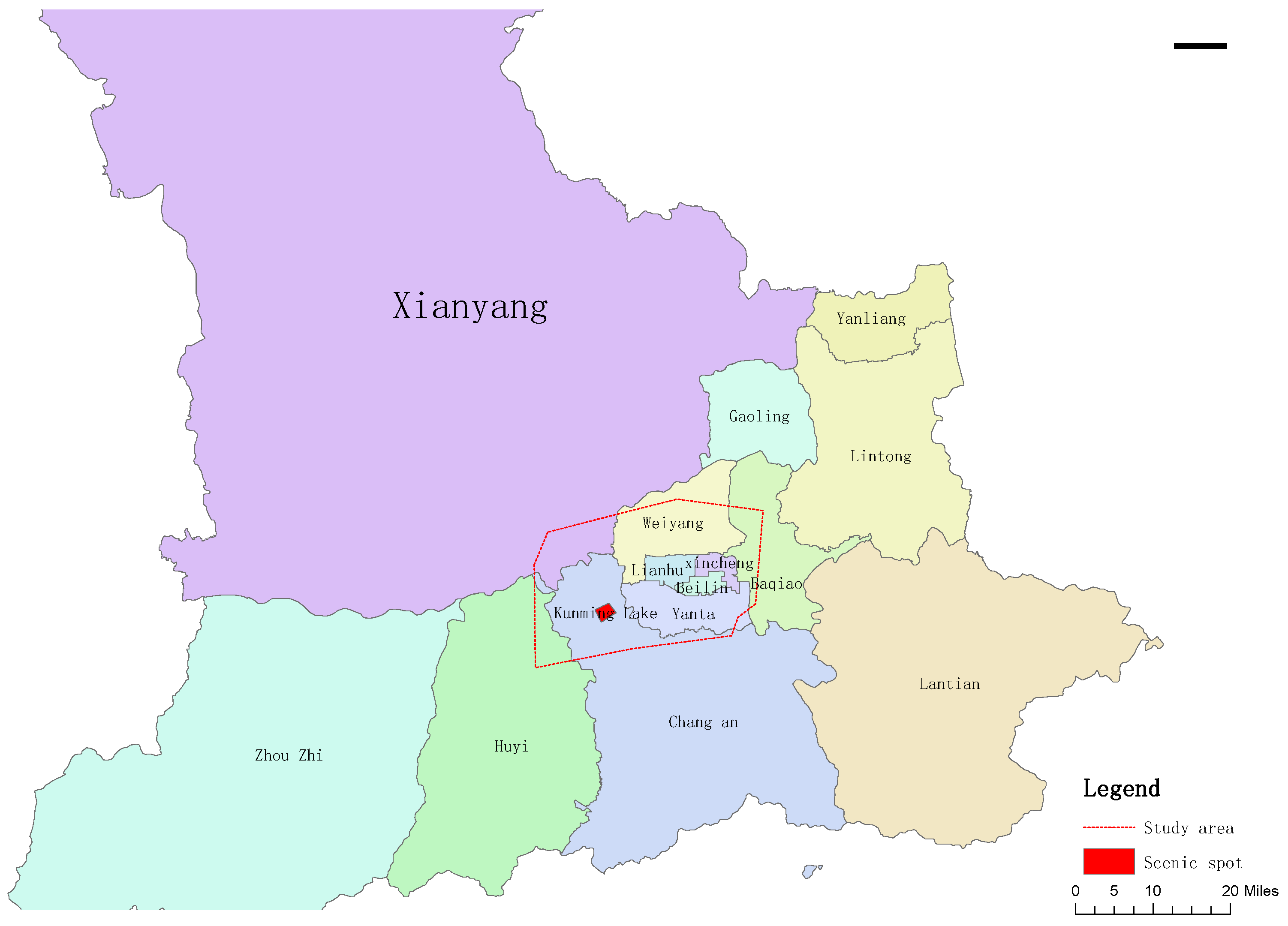

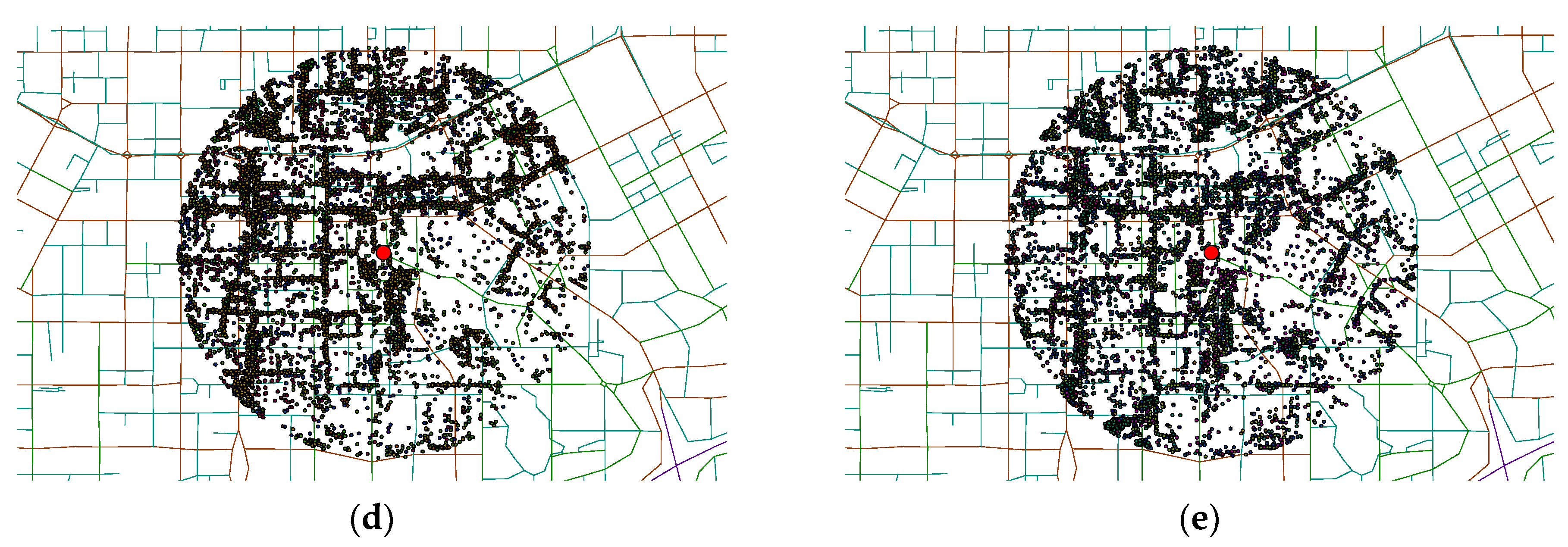
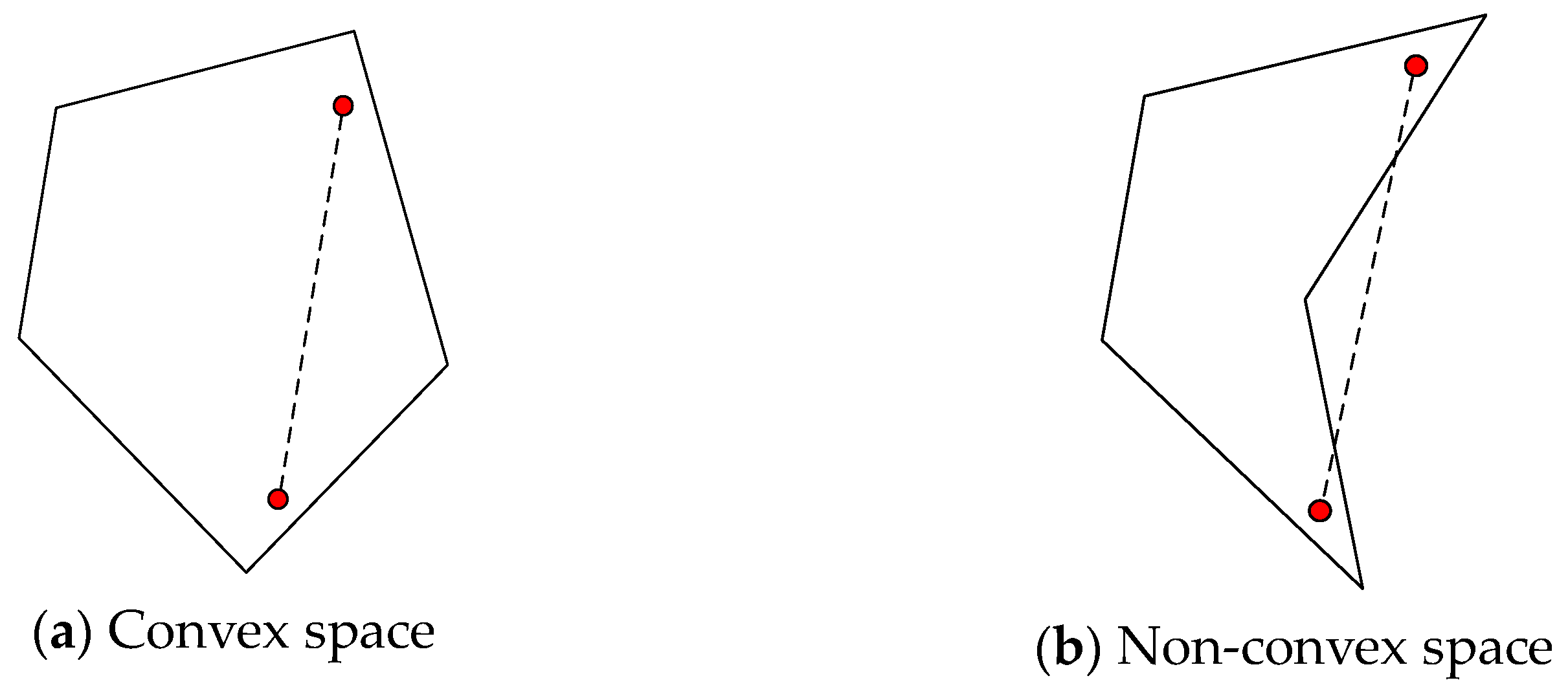

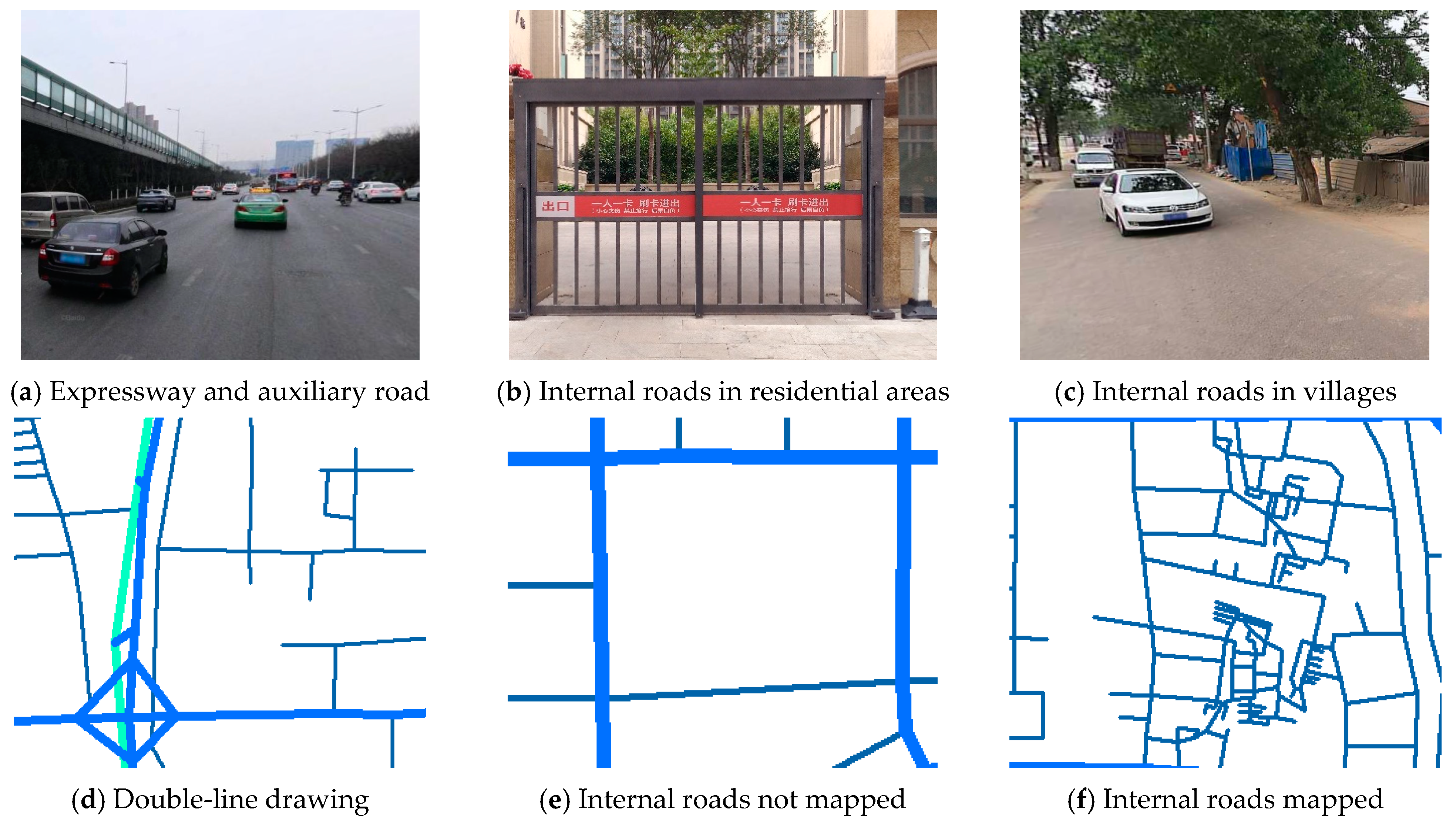
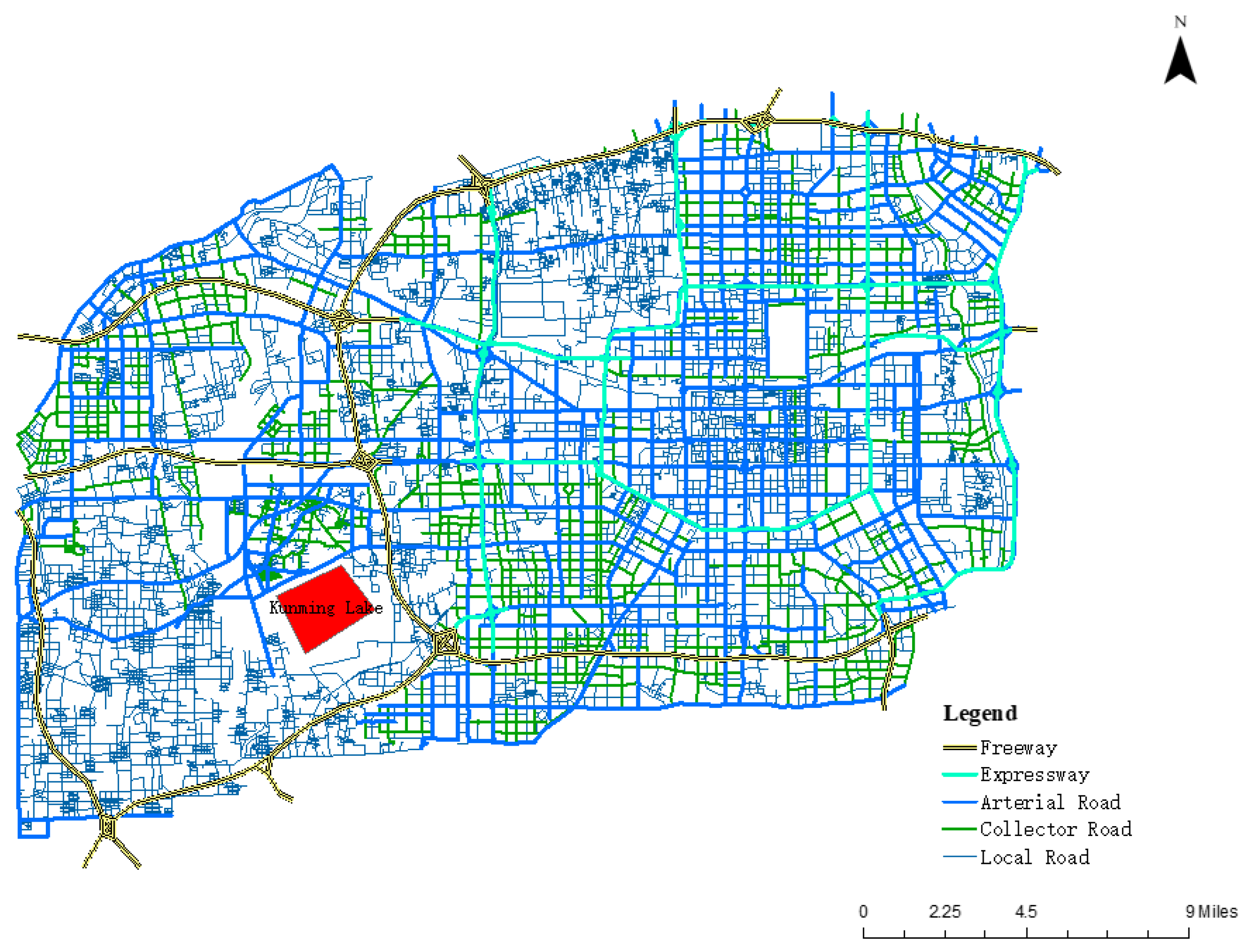
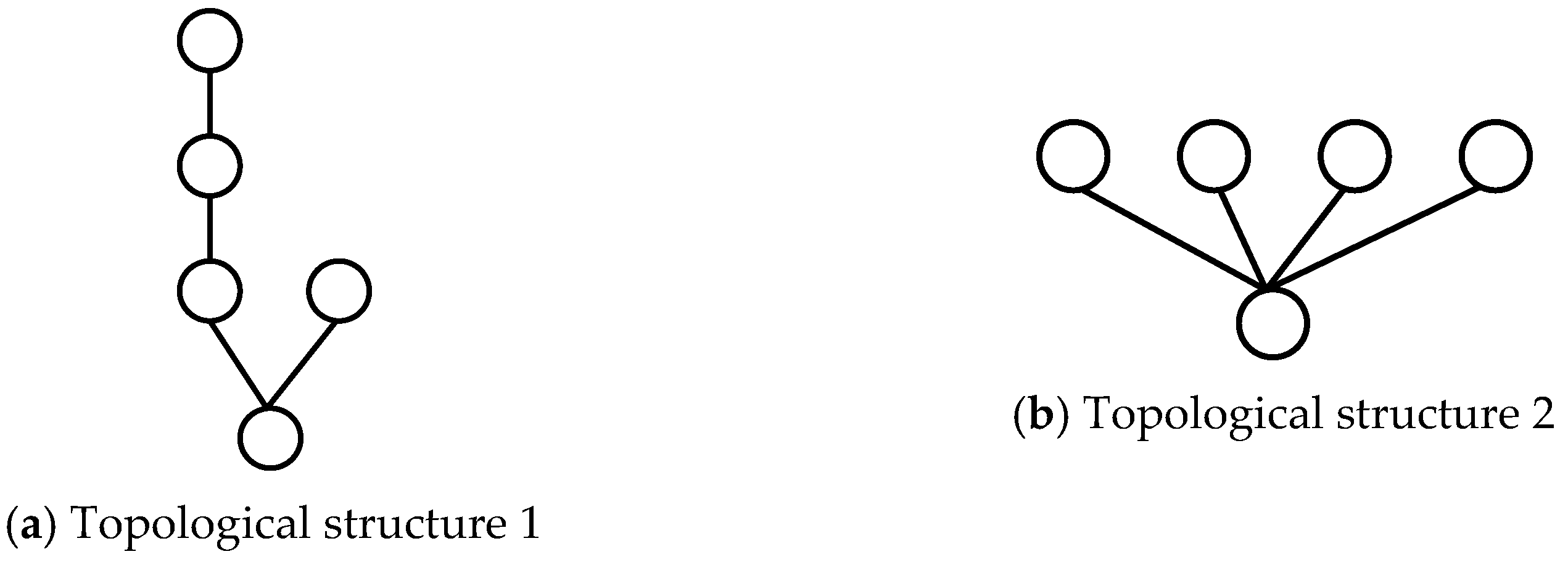





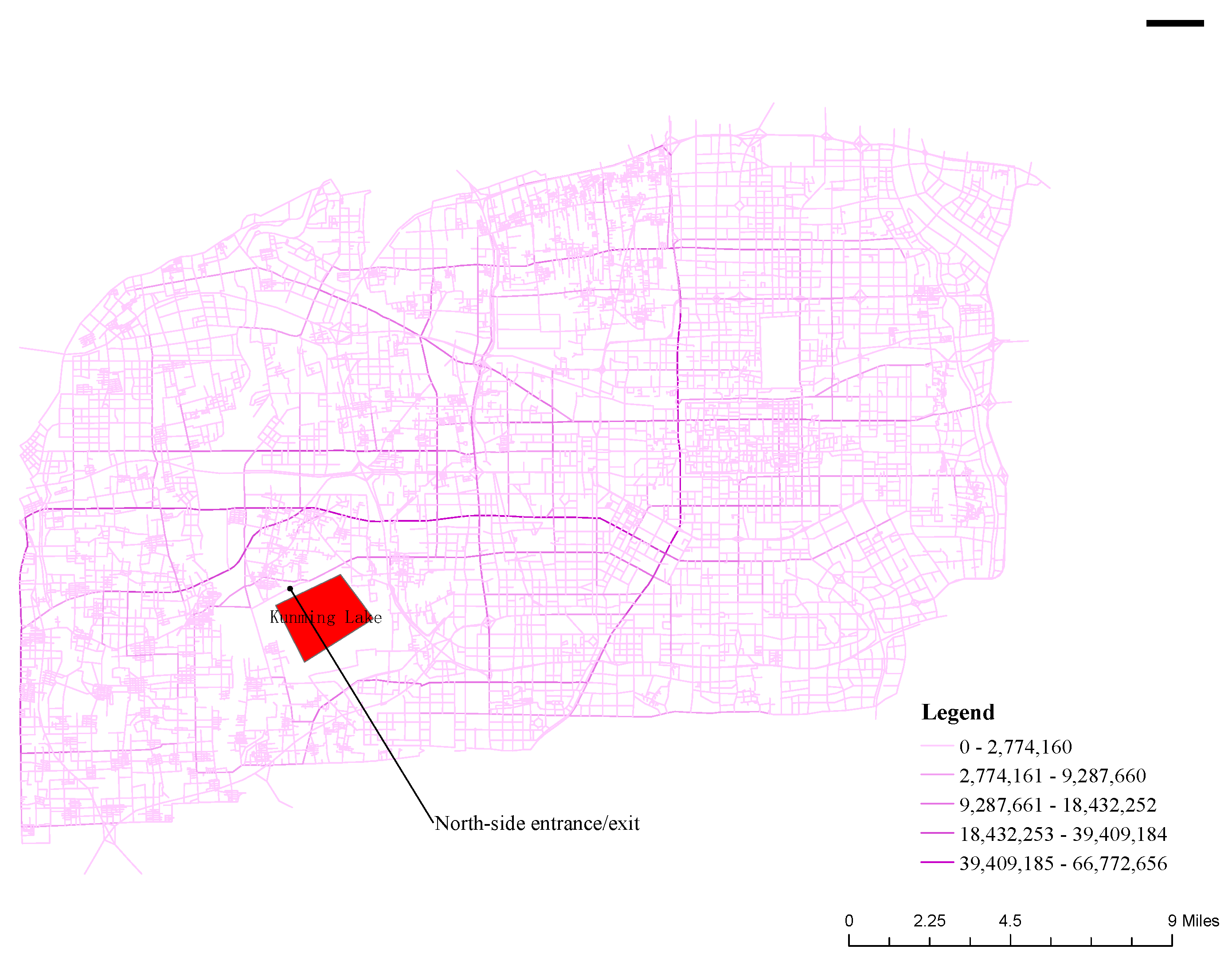
| Consumer Conditions Broad Category | Consumer Conditions Mid-Category |
|---|---|
| Accommodation Services | Hotels, guesthouses, accommodation-service-related places |
| Healthcare Services | Animal medical establishments, first aid centers, disease prevention organizations, healthcare service places, pharmaceutical and healthcare sales stores, clinics, specialized hospitals, general hospitals |
| Sports and Leisure Services | Vacation spas, leisure places, theaters, entertainment venues, sports venues |
| Living Services | Electricity sales offices, telecommunication sales offices, shared equipment, travel agencies, beauty salons, job markets, photography studios, business offices, ticket offices, repair stations, logistics centers, laundromats, information centers, baby service centers, post offices |
| Business and Residential | Industrial parks, buildings, business and residential places |
| Science, Education, and Culture | Museums; media organizations; archive libraries; convention and exhibition centers; driving schools; science and technology museums; science, education, and culture centers; scientific research organizations; art museums; training organizations; libraries; cultural palaces; literary organizations; schools; exhibition halls |
| Financial and Insurance Services | Insurance companies, finance companies, financial and insurance service organizations, banks, securities companies, automatic teller machines |
| Transportation Services | Metro stations, port terminals, bus stations, transportation services, parking lots |
| Shopping Services | Convenience stores; supermarkets; clothing, shoe, hat, and leather goods stores; personal goods and cosmetic stores; flower, bird, fish, and insect markets; home appliance and electronics stores; home building materials markets; shopping malls; specialty shopping streets; special trading places; sporting goods stores; cultural goods stores; specialty stores; comprehensive markets |
| Company Enterprises | Factory, company, agriculture, forestry, and fishery bases |
| Catering Services | Tea ceremony house, pastry shops, coffee shops, fast food restaurants, cold drinks shops, dessert shops, foreign restaurants, casual dining restaurants, Chinese restaurants |
| POI Types | Dayan Pagoda in 2018 | Dayan Pagoda in 2023 | Kunming Lake in 2018 | Kunming Lake in 2023 |
|---|---|---|---|---|
| Accommodation Services | 1032 | 1567 | 13 | 12 |
| Sports and Leisure Services | 771 | 909 | 15 | 24 |
| Transportation Services | 1676 | 1486 | 40 | 42 |
| Shopping Services | 5771 | 2954 | 256 | 277 |
| Catering Services | 2821 | 4226 | 64 | 204 |
| Total number of POIs | 19,643 | 19,452 | 666 | 862 |
| Consumer Conditions Mid-Category | Dayan Pagoda in 2018 | Dayan Pagoda in 2023 | Kunming Lake in 2018 | Kunming Lake in 2023 |
|---|---|---|---|---|
| Metro station | 32 | 50 | 0 | 0 |
| Port Terminal | 2 | 2 | 0 | 2 |
| Bus Station | 213 | 86 | 26 | 19 |
| Transportation Services Related | 25 | 14 | 4 | 3 |
| Parking lot | 1404 | 1334 | 10 | 18 |
| Total number of POIs | 1676 | 1486 | 40 | 42 |
| Raw Values | Normalization Values | |||||
|---|---|---|---|---|---|---|
| Mean | Median | Standard Deviation | Mean | Median | Standard Deviation | |
| Integration (R = 1000 m) | 28.340 | 24.174 | 17.993 | 0.064 | 0.055 | 0.038 |
| Integration (R = 3000 m) | 101.877 | 95.107 | 48.931 | 0.305 | 0.284 | 0.145 |
| Integration (R = 5000 m) | 210.690 | 200.895 | 89.368 | 0.336 | 0.320 | 0.142 |
| Integration (R = 10,000 m) | 560.427 | 547.595 | 205.762 | 0.436 | 0.426 | 0.160 |
| Integration (R = 20,000 m) | 1388.027 | 1309.154 | 498.751 | 0.426 | 0.402 | 0.153 |
| Integration (R = 30,000 m) | 2057.336 | 2037.841 | 634.522 | 0.531 | 0.526 | 0.163 |
| Choice R300 | Choice R500 | Choice R800 | Choice R1000 | Choice R3000 | Choice R5000 | Choice R10000 | Choice R20000 | Choice R30000 | |
|---|---|---|---|---|---|---|---|---|---|
| NCR300 | 0.714 ** | 0.759 ** | 0.651 ** | 0.571 ** | 0.217 ** | 0.091 ** | −0.048 ** | −0.120 ** | −0.127 ** |
| NCR500 | 0.593 ** | 0.728 ** | 0.706 ** | 0.639 ** | 0.282 ** | 0.148 ** | −0.006 | −0.096 ** | −0.110 ** |
| NCR800 | 0.498 ** | 0.639 ** | 0.691 ** | 0.668 ** | 0.366 ** | 0.228 ** | 0.057 ** | −0.053 ** | −0.076 ** |
| NCR1000 | 0.462 ** | 0.586 ** | 0.650 ** | 0.649 ** | 0.413 ** | 0.277 ** | 0.096 ** | −0.023 ** | −0.051 ** |
| NCR3000 | 0.274 ** | 0.340 ** | 0.390 ** | 0.410 ** | 0.475 ** | 0.417 ** | 0.252 ** | 0.099 ** | 0.058 ** |
| NCR5000 | 0.206 ** | 0.260 ** | 0.292 ** | 0.305 ** | 0.383 ** | 0.385 ** | 0.281 ** | 0.147 ** | 0.108 ** |
| NCR10000 | 0.070 ** | 0.096 ** | 0.123 ** | 0.137 ** | 0.212 ** | 0.242 ** | 0.269 ** | 0.220 ** | 0.183 ** |
| NCR20000 | −0.016 * | −0.027 ** | −0.003 | 0.014 * | 0.083 ** | 0.108 ** | 0.156 ** | 0.201 ** | 0.195 ** |
| NCR30000 | −0.028 ** | −0.055 ** | −0.039 ** | −0.020 ** | 0.035 ** | 0.050 ** | 0.089 ** | 0.145 ** | 0.156 ** |
Disclaimer/Publisher’s Note: The statements, opinions and data contained in all publications are solely those of the individual author(s) and contributor(s) and not of MDPI and/or the editor(s). MDPI and/or the editor(s) disclaim responsibility for any injury to people or property resulting from any ideas, methods, instructions or products referred to in the content. |
© 2024 by the authors. Licensee MDPI, Basel, Switzerland. This article is an open access article distributed under the terms and conditions of the Creative Commons Attribution (CC BY) license (https://creativecommons.org/licenses/by/4.0/).
Share and Cite
Zhang, H.; Li, C.; Fan, J.; Yun, K.; Wu, J. Exploring the Impact of Urban Road Network Characteristics on City Fringe Tourist Areas: A Case Study of Xi’an, China. Sustainability 2024, 16, 4359. https://doi.org/10.3390/su16114359
Zhang H, Li C, Fan J, Yun K, Wu J. Exploring the Impact of Urban Road Network Characteristics on City Fringe Tourist Areas: A Case Study of Xi’an, China. Sustainability. 2024; 16(11):4359. https://doi.org/10.3390/su16114359
Chicago/Turabian StyleZhang, Hongtao, Congying Li, Jiahao Fan, Kaituo Yun, and Jiaxi Wu. 2024. "Exploring the Impact of Urban Road Network Characteristics on City Fringe Tourist Areas: A Case Study of Xi’an, China" Sustainability 16, no. 11: 4359. https://doi.org/10.3390/su16114359
APA StyleZhang, H., Li, C., Fan, J., Yun, K., & Wu, J. (2024). Exploring the Impact of Urban Road Network Characteristics on City Fringe Tourist Areas: A Case Study of Xi’an, China. Sustainability, 16(11), 4359. https://doi.org/10.3390/su16114359





